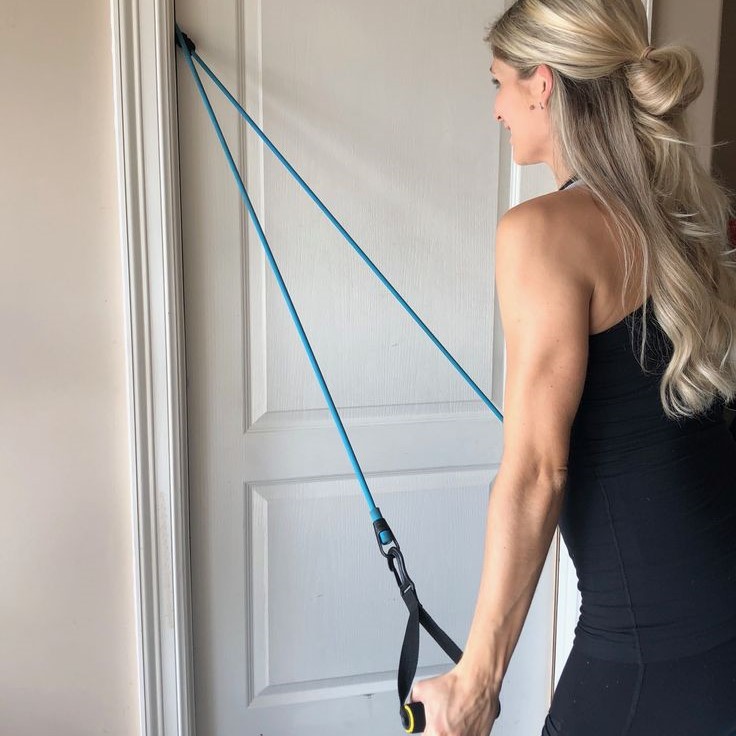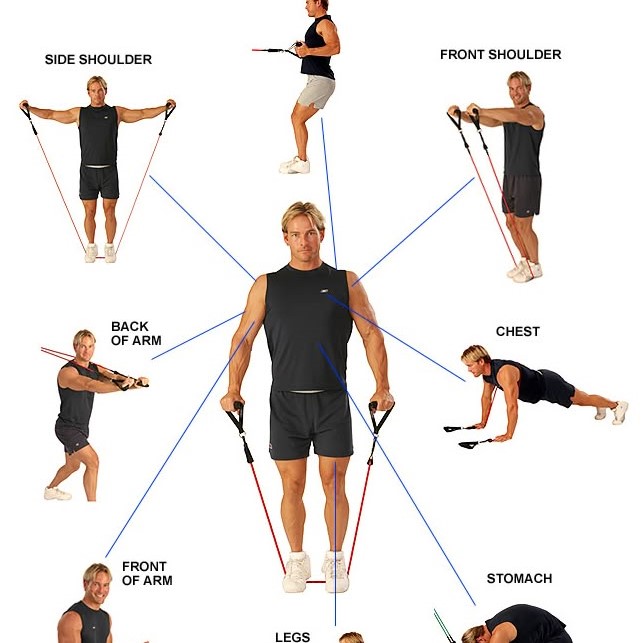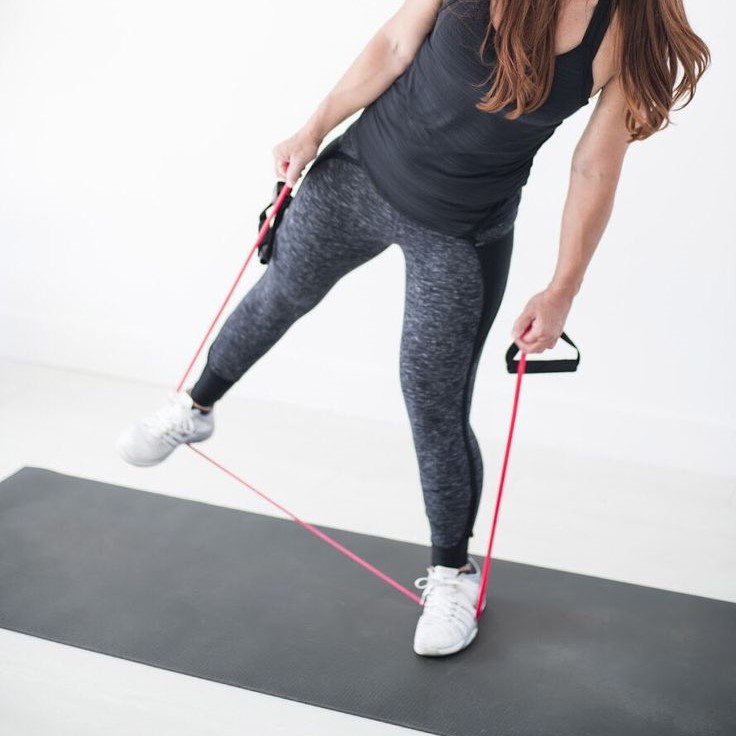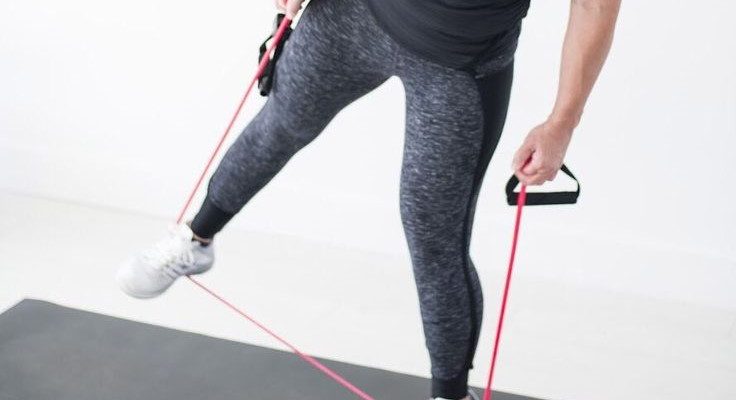Introduction
In recent years, elastic band exercises have gained immense popularity among fitness enthusiasts. These versatile tools are not only effective but also portable and affordable. Whether you are a seasoned gym-goer or a beginner seeking to improve your fitness, resistance bands can help you achieve your goals with ease. They provide a unique way to add tension and resistance to your workouts, which in turn helps to build strength and enhance flexibility.
Elastic bands come in various sizes and resistance levels, making them suitable for everyone. They can be used for a multitude of exercises that target every major muscle group. In this article, we will explore the numerous benefits of elastic band exercises, provide effective workout routines, and discuss tips for incorporating these exercises into your fitness regime.

Why Choose Elastic Band Exercises?
There are several compelling reasons to incorporate elastic band exercises into your workout routine. Here are some of the most noteworthy advantages:
- Versatility: Elastic bands can be used for various types of workouts, including strength training, stretching, and rehabilitation exercises. This versatility allows you to target different muscle groups and customize your workout as needed.
- Portability: One of the key benefits of using elastic bands is their portability. You can easily pack them in your bag for travel or slip them into a drawer at home. This accessibility allows you to exercise almost anywhere, whether at home, in a hotel room, or outside.
- Adaptability: Elastic bands come in different thicknesses, offering varying resistance levels. This makes it easy for beginners to start with lighter bands and progress to heavier ones as their strength improves.
- Joint-friendly Workouts: Elastic band exercises provide a safer alternative to traditional weights. The bands create less strain on the joints while still offering an effective workout. This makes them suitable for individuals recovering from injuries or suffering from joint pain.
- Cost-effectiveness: Compared to expensive gym memberships or home gym equipment, elastic bands are relatively inexpensive. They offer an effective way to achieve similar results without breaking the bank.
Given these benefits, it’s clear that elastic band exercises are a fantastic addition to any fitness routine.
Effective Elastic Band Exercises to Try
Here’s a breakdown of some highly effective elastic band exercises you can incorporate into your routine. Each exercise targets different muscle groups and can help improve your overall strength and flexibility.
1. Band Squats
- How to Perform: Start by standing on the middle of the resistance band with your feet shoulder-width apart. Hold the ends of the band at your shoulders or arms straight up. Lower into a squat while keeping your back straight. Return to the starting position and repeat.
- Benefits: This exercise targets your quads, hamstrings, and glutes, making it a great full-body workout.
2. Chest Press
- How to Perform: Anchor the band behind you (e.g., on a door or wall). Holding the band’s ends, stand with your feet shoulder-width apart. Push your hands forward until your arms are fully extended. Return to the starting position.
- Benefits: This move focuses on your chest and triceps, helping to build upper body strength.
3. Bent-Over Rows
- How to Perform: Stand on the band and hold both ends in each hand. Bend at the hips and knees slightly. Pull the band towards your chest, squeezing your shoulder blades together. Return to the starting position.
- Benefits: Bent-over rows work the back muscles while strengthening the biceps.
4. Lateral Band Walks
- How to Perform: Place a band around your legs, just above your knees. Squat slightly and step sideways to the right, then to the left.
- Benefits: This exercise targets the glutes and outer thighs, enhancing lower body stability.
5. Tricep Extensions
- How to Perform: Stand on the band with one foot and hold the other end in one hand. Raise your arm above your head, then lower it behind your neck while keeping your upper arm stationary.
- Benefits: This exercise isolates the triceps, building upper arm strength.
6. Shoulder Press
- How to Perform: Stand on the band with your feet shoulder-width apart. Hold the ends at shoulder height and press upward until your arms are fully extended.
- Benefits: This move works your shoulders and engages your core.
7. Glute Bridges
- How to Perform: Lie on your back with your knees bent and feet flat on the floor. Place a band around your thighs, just above your knees. Lift your hips off the ground, squeezing your glutes. Lower back down.
- Benefits: This exercise targets the glutes while providing core engagement.
8. Side Bends
- How to Perform: Stand on the band with one foot and hold the other end in the opposite hand. Flex your side, bringing the band over your head, and then return to the starting position.
- Benefits: Side bends work the obliques and help build core strength.

Incorporating these exercises into your routine can provide a comprehensive workout that targets all major muscle groups.
Tips for Effective Elastic Band Workouts
To maximize the effectiveness of your elastic band exercises, keep the following tips in mind:
Choose the Right Resistance Level
- Assessing Your Fitness Level:
- When selecting resistance bands, it’s essential to choose ones that match your current fitness level. Bands are available in a variety of resistance levels, typically indicated by color codes. Understanding your own strength and experience will help you pick the right band.
- If you’re a beginner, start with lighter resistance bands to familiarize yourself with the exercises and proper form. As you gain strength and confidence, gradually progress to bands with higher resistance.
- Finding the Right Balance:
- Using resistance bands that are too light may not provide the challenge needed to stimulate muscle growth and improvement. Conversely, bands that are too heavy can hinder your performance and compromise your form, increasing the risk of injury.
- To find the right resistance, perform a few test exercises with the band. Aim for a level where you can complete your desired repetitions with effort but still maintain good form throughout the set.
Focus on Your Form
- Importance of Proper Technique:
- Maintaining proper form during resistance band exercises is crucial for maximizing the benefits of your workouts and preventing injuries. Incorrect form can lead to strain or overuse injuries, especially when adding resistance.
- Keep your core engaged and maintain proper alignment of your joints. This means ensuring your knees, hips, and shoulders are aligned, contributing to safer and more effective movements.
- Mindful Movement:
- Pay close attention to your body as you execute each exercise. Focus on controlled movements rather than rushing through repetitions. Engaging in mindful exercise encourages muscle engagement and enhances workout performance.
- Additionally, pay attention to your breathing; consistent, rhythmic breathing can improve endurance and ensure that your muscles receive adequate oxygen during workouts.
Warm Up
- Significance of Warming Up:
- Warming up before your workout is a vital practice that helps prevent injuries and prepares your body for the physical demands ahead. A proper warm-up increases blood flow, elevates your heart rate, and loosens your muscles.
- Engaging in light stretching or dynamic movements eases your muscles into action, improving flexibility and range of motion for subsequent exercises.
- Effective Warm-Up Techniques:
- Consider incorporating warm-up exercises that mimic the movements you’ll perform during your workout. For example, if you plan to use resistance bands for squats, warm up with bodyweight squats or lunges.
- Additionally, spend at least 5–10 minutes warming up to ensure your body is adequately prepared, which can enhance your performance and willingness to push through the workout.
Listen to Your Body
- Monitoring Your Physical Response:
- As with any exercise routine, being aware of how your body responds to resistance band workouts is crucial. Noticing any signs of pain or discomfort helps you avoid exacerbating potential issues.
- If you encounter unexpected soreness or discomfort in muscles or joints, take a moment to assess your form and technique. Consider reducing the resistance or modifying your movements to alleviate strain.
- Adjusting Your Routine:
- Remember that workouts should challenge you but not cause excessive pain. If you consistently experience discomfort, review your resistance levels and exercise volume. A professional trainer or physical therapist can provide valuable guidance in such scenarios.
- Adapt your training plan as necessary, increasing or decreasing resistance levels based on your comfort and performance. Listening to your body fosters a sustainable and enjoyable fitness journey.
Combine with Other Exercises
- Creating a Balanced Routine:
- For effective and well-rounded strength training, consider incorporating elastic band exercises with other forms of movement, such as bodyweight exercises, free weights, or Pilates.
- Combining different types of resistance training enhances muscle engagement and helps you develop comprehensive strength while preventing workout monotony.
- Varied Training for Improved Results:
- Mixing up your routine not only increases engagement but also promotes overall muscle development. Targeting different muscle groups using various training modalities can lead to more significant improvements in strength and endurance.
- For instance, alternate between resistance band workouts focusing on upper body strength and bodyweight exercises for core and lower body stability to achieve balanced fitness goals.
Stay Consistent
- Establishing a Routine:
- Consistency is foundational to achieving success in any workout regime. Aim to incorporate resistance band workouts into your fitness plan 2–3 times per week to facilitate ongoing improvements in strength and fitness.
- Consider scheduling your workouts in advance and treating them like important appointments. Sticking to a regular routine fosters discipline and allows you to track your progress effectively.
- Tracking Progress:
- Keep a record of your workouts to monitor changes in strength, endurance, and overall fitness levels. This tracking can motivate you and provide insight into your progress over time.
- Celebrating small achievements, such as increased repetitions or resistance levels, can boost your confidence and enhance your commitment. Consistency, along with progress tracking, ensures long-term success in your fitness journey.
By following these tips, you can effectively use elastic band exercises to achieve your fitness goals.
Conclusion: Transform Your Fitness Routine with Elastic Bands
In summary, elastic band exercises are a versatile and effective way to enhance your workout routine. The benefits they offer, including portability, adaptability, and joint-friendly nature, make them an ideal choice for fitness enthusiasts at any level.

Whether you choose to follow the effective exercises we provided or create your own routine, incorporating these resistance bands into your workouts can bring about impressive results. Remember to stay consistent, focus on your form, and listen to your body as you explore the endless possibilities of elastic band exercises.
Revamping your fitness routine with these efficient and dynamic exercises can lead to greater strength, flexibility, and overall well-being. Now is the time to grab those elastic bands and get moving!


